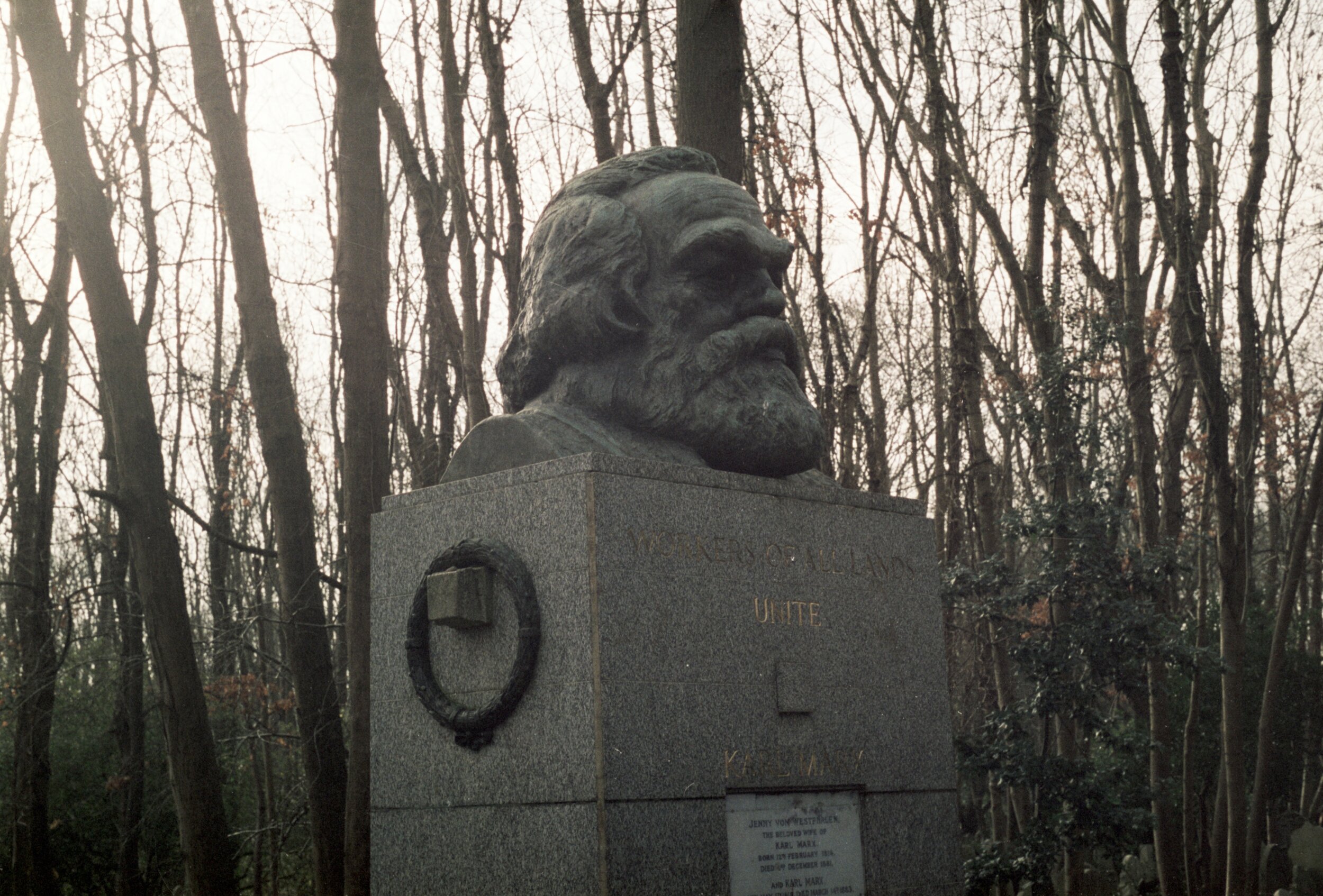
Karl Marx’s Head
The telltale head
In the corner of Highgate cemetery sits a shrine to a man who described religion as the opium of the people. Karl Marx is one of the most famous inhabitants of the cemetery and his grave is impressive consisting of a giant (and I mean exceptionally large) bust of his very recognisable face. But the story behind the tomb is interesting in itself.
Marx died in 1883 and was buried only three days after his death surrounded by a small group of mourners (less than 30 by most accounts). Legend has it that the death announcement was delayed by two days and then suggested that he had died in Paris – seriously limiting the number of people who knew the time and date of the funeral. The list of those that did attend however, reads as a master class of nineteenth century social reform and revolution. Engels performed the Eulogy whilst the ordinary mourners included Edward Aveling (the prominent biologist and socialist), Paul Lafargue (the French revolutionary), Charles Longuet (a key figure in the Paris Commune of 1871) and Wilhelm Liebknecht (the founder of the German SPD). Also present was Helene Demuth who, for almost 40 years, had been the Marx’s live-in housekeeper and who (allegedly) had an illegitimate son with Marx.
Despite years of socialist visitors (including Lenin in 1903) the modest Marx family plot didn’t seem fitting for the hero of the revolution and, in 1954, Marx and his family were dug up and moved to the more prominent location he now occupies. The new memorial was unveiled two years later by the General Secretary of the Communist Part of Great Britain.
But this was not the end of the story for the head of Marx. In January 1970, it became the centre of one of the more bizarre acts of domestic terrorism. A plot was hatched whereby a rudimentary bomb made of fireworks, weed-killer and sugar was planted at the memorial. It had clearly been the conspirators’ intention to cut through the bronze nose of Marx to place the bomb inside the hollow head. Luckily Marx was saved by a literal nostril, the terrorists being unable to saw all the way through it during the night (although having done plenty of damage to the rest of the face).
Faced with little other option, the bomb was placed next to the memorial where it exploded doing £600 of damage (and luckily causing no injury). The National Archives at Kew still contain the police report from the incident that documents that no suspects were found and there were few leads save for a letter written to the cemetery team stating: “And when you’ve repaired the statue of that commie bastard, we’ll blow it up again”.
Despite this, the shrine ultimately became the centre of a gaggle of tombs belonging to left wing supporters from all around the world. Today, it is easy to see names from Eastern Europe, Central America and the Middle East in the close vicinity. All these individuals have decided to be buried far from their birth places at the feet of the man who recognised no nationalistic boundaries.
